We’re not worthy, quoted Wayne Campbell. The Golden Age is a children’s illustrated book that presents 17 of Ovid’s poems in story form. Without context, the writings from a two-century deceased poet that Augustus exiled to the Black Sea are not the sort of readings that tempt young audiences. However, when it’s paired with esoteric artwork that has a timeless appeal to it, combined with this style of writing it’s elevated to something greater than the sum of its parts.
The Golden Age features stories that Heinz Janisch has retold. They’ve been culled from 15 books, which when collected are known as The Metamorphoses. That work has over 250 stories in which most of them talk about change or other base, timeless human characteristics that are as easy to relate to then, as they are now. In other words, this text is inspired by a really old series of poems that talk about creation, greed, love, and death via characters that live in forests, Gods in the sky or rulers that live on the land. You Middle Earth kids are intrigued now, as are you Percy Jackson people.
But then you look at the staccato manner in which The Golden Age is written. It’s not a poem where there are rhyming stanzas here and there. The paragraphs are very short, usually consisting in three sentences. There are some instances where it’s just one line that might even conclude with an ellipsis.
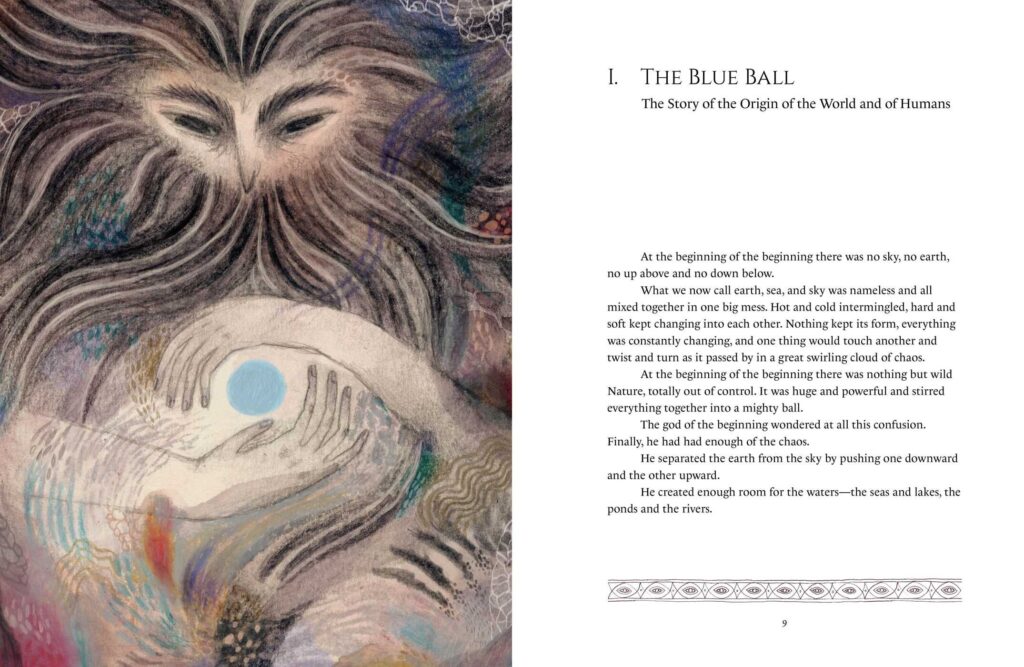
The illustrations are from Ana Sender and perfectly match the big-scale vibe that the text is setting it up for. It does so in a more ethereal way by muting the colors and allowing the reader’s imagination to look for details within the images. By doing this the full-page illustrations work as a metaphor for the text. The wizard-type man who is holding a small blue ball is the God that’s separating the sky from the Earth. I can see that now.
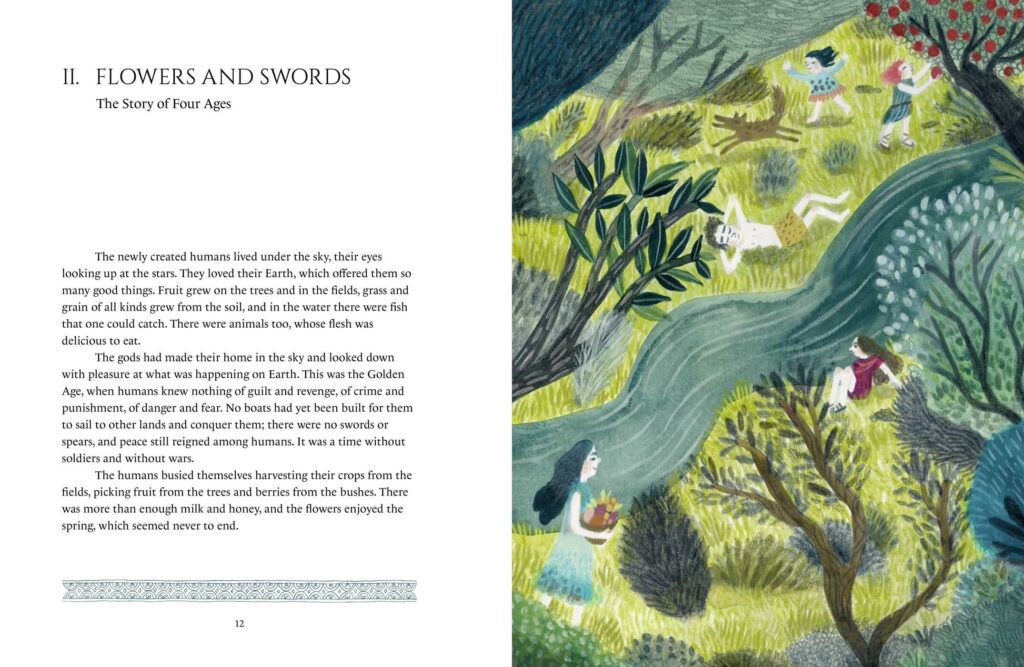
The edges of the book’s pages are blue and form a nice quarter-inch bond between the cover. The Golden Age is embossed on the surface in gold, and the book’s full title The Golden Age-Ovid’s Metamorphoses is presented the same way on its spine.
The sum effect of all of this is that The Golden Age feels like a keepsake book. In your perfect, Greek scholar mind you can see those early through mid-elementary students being enthralled as you read it to them. Some will say that the story sounds like this or that a certain character has the same name as someone else that they know. It’s a timeless series of stories that have worked for the past 2,000 years for a reason.
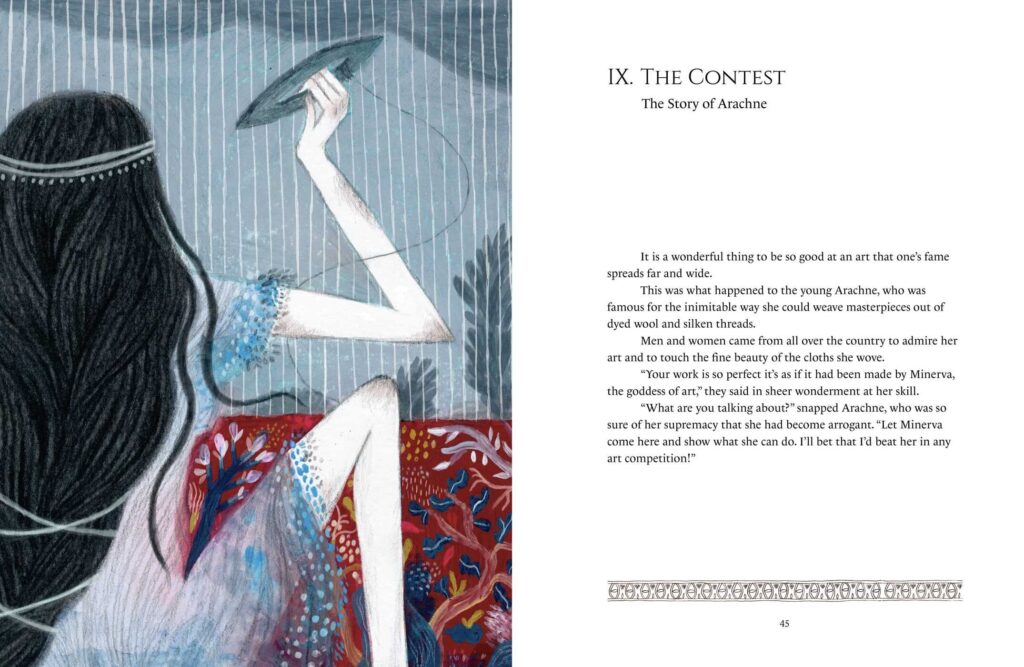
The only downfall to the book for some elementary school libraries is that the woman on the cover of The Golden Age is naked. She’s riding a giant wolf-deer beast that’s five times her size, with her very long hair obscuring all but the side of her right leg and arm. It’s implied nudity, that’s in accordance with creation, but might bother some adults. Parents are weird and some of those weird parents will jump up and down about a book in their library that has this illustration on it. It won’t raise any bells at middle school libraries, but those younger libraries, where the book could be enjoyed more, might see this wonderful read simply because of that.
There are affiliate links in this post.

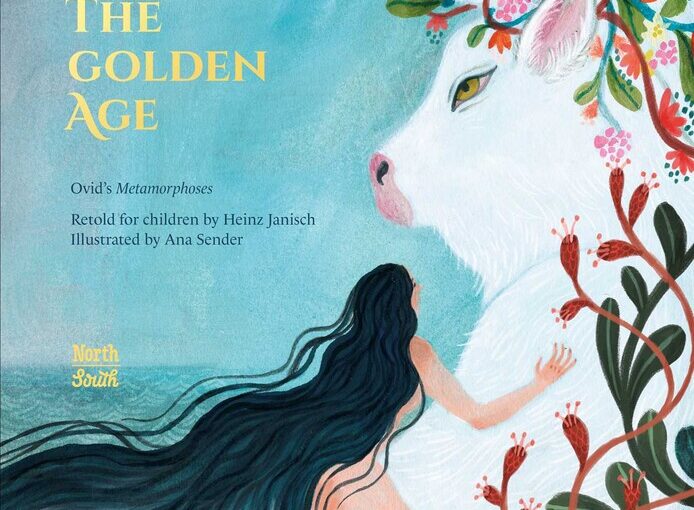
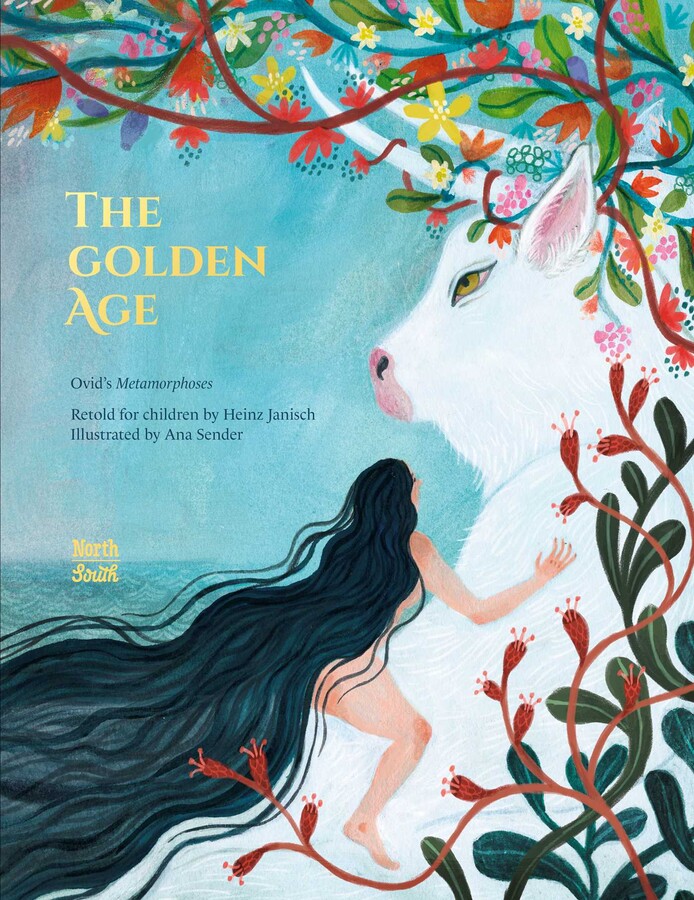



 Facebook
Facebook Twitter
Twitter Flickr
Flickr GooglePlus
GooglePlus Youtube
Youtube